The ideals of beauty have evolved throughout history and, logically, fashion has had to adapt to these canons. While men's clothing was becoming simpler until it became a three-piece suit (trousers, jacket with vest and shirt), women's clothing became more and more complicated, until it became dangerous in the mid-nineteenth century when it was adapted to the ideal of extreme beauty of the time:enhanced bust, an impossible waist refined by the corset and huge hips artificially manufactured with frames under the fabric to increase the size of the skirts. Although these frames had been used among the European nobility since the end of the XV –infantry guards , because it allowed to hide pregnancies, fools or cuppers , which gave rise to a risky profession:the snug-fitter or plunger-, none of them reached the limits of the absurd hoop skirt or crinoline .
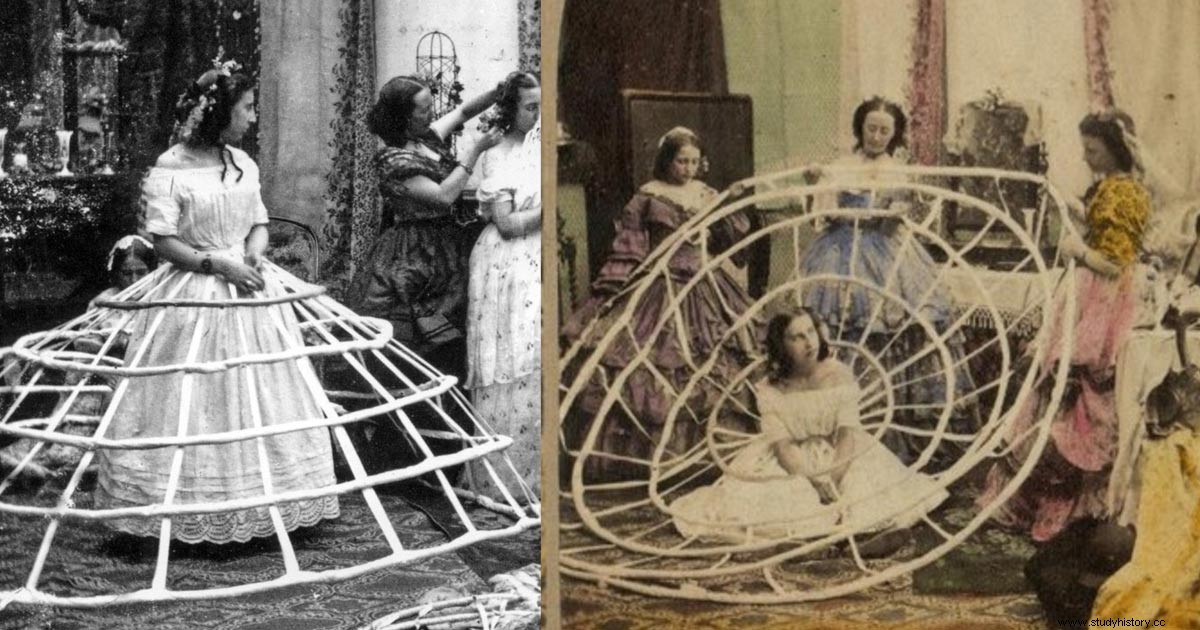
In the early days it was easy to get those flared skirts by stuffing them with starched petticoats. Two or three to begin with, and in this way they were easy and bearable, but as women seemed to compete for the widest skirt, petticoats were added… up to 14. To save weight and relieve the suffocating heat of so many garments, petticoats were made. attempts to make skirts larger without adding petticoats. For example, putting bicycle tires around that were inflated with air or water (this last option could be very embarrassing if a leak occurred). Until the mid-19th century in Paris the crinoline appeared. , a cage-like frame that replaced all petticoats made of horsehair and linen ("crinis » and «linum «, hence its name).
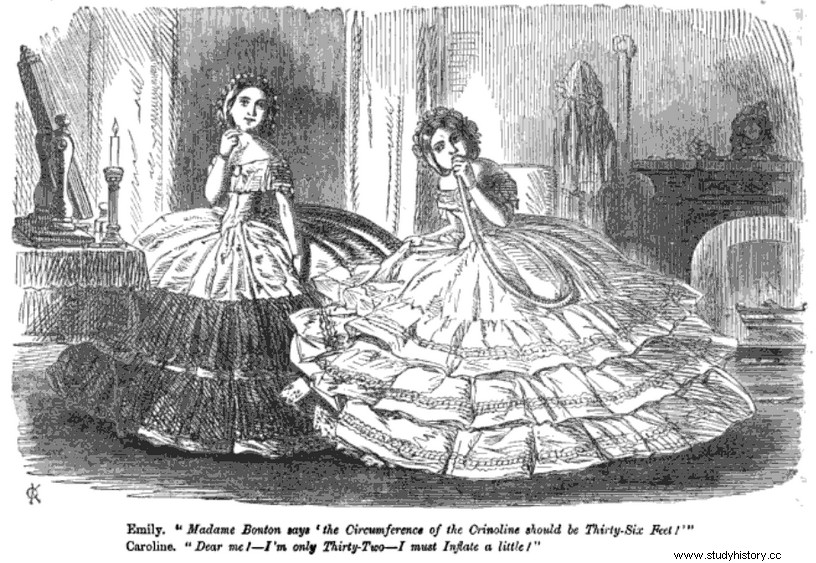
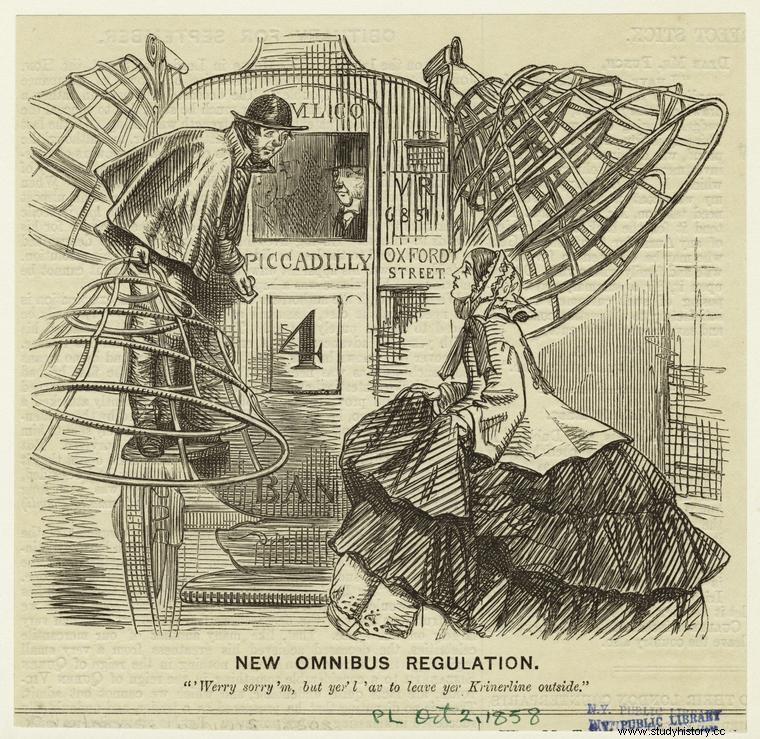
Going through the doors (the architecture of the new houses was modified to adapt them to crinolines), sitting on the chairs, getting into the carriages... everything in the day-to-day life was complicated with that contraption and, sometimes, deadly. The greatest danger of crinolines lay in the high risk of fire at a time when fire was very present in fireplaces, kitchens and lighting. It was very difficult to move with the crinolines having to be aware of such a large perimeter, so it was very easy for them to accidentally approach a fire and set the skirt on fire. In fact, the New York Times published in 1858 in an advertisement that warned of the danger of these garments:they caused an average of three deaths a week.
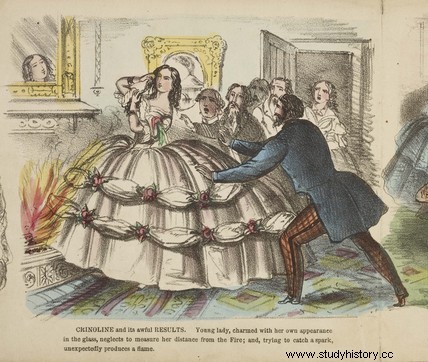
The most terrible case occurred on December 8, 1863 when more than 2,000 people died in the church of the Society of Jesus in Santiago de Chile. A candle started a fire on the altar that spread quickly, but tragedy struck when panicked people tried to flee but I was impossible with the crinolines.
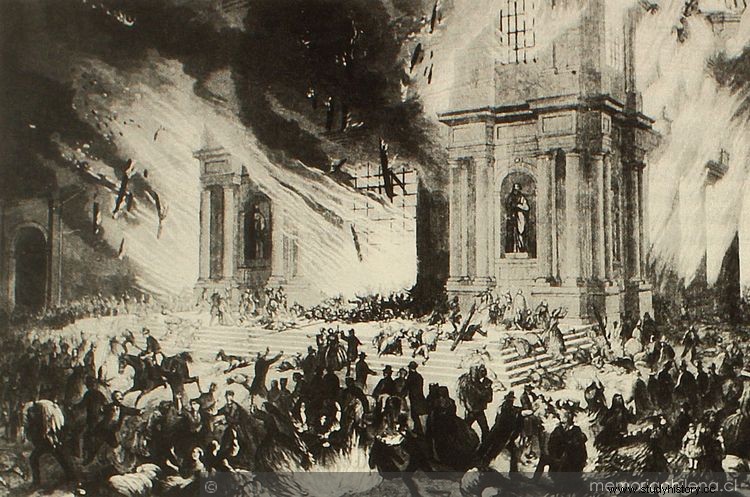
Some women have been able to put the huge gap under their skirt to "good" use. During the US Civil War, southern women hid weapons and contraband, circumventing the Union's ban on bringing goods to the Confederate states.
